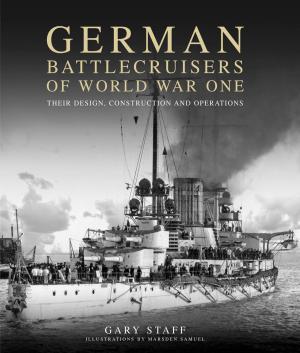Constantius II
Usurpers, Eunuchs and the Antichrist
Nonfiction, History, Ancient History, Rome, Medieval| Author: | Peter Crawford | ISBN: | 9781473883932 |
| Publisher: | Pen and Sword | Publication: | November 11, 2016 |
| Imprint: | Pen and Sword Military | Language: | English |
| Author: | Peter Crawford |
| ISBN: | 9781473883932 |
| Publisher: | Pen and Sword |
| Publication: | November 11, 2016 |
| Imprint: | Pen and Sword Military |
| Language: | English |
The reign of Constantius II has been overshadowed by that of his titanic father, Constantine the Great, and his cousin and successor, the pagan Julian. However, as Peter Crawford shows, Constantius deserves to be remembered as a very capable ruler in dangerous, tumultuous times.
When Constantine I died in in 337, the twenty-year-old Constantius and his two brothers, Constans and Constantine II, all recieved the title of Augustus to reign as equal co-emperors. In 340, however, Constantine II was killed in a fraternal civil war with Constans. The two remaining brothers shared the Empire for the next ten years, with Constantius ruling Egypt and the Asian provinces, constantly threatened by the Sassanid Persian Empire. However, Constans in turn was killed by the usurper Magentius in 350. Constantius refused to accept this fait accompli, made war on Magentius and defeated him at the battles of Mursa Major and Mons Seleucus, leading him to commit suicide.
Constantius, was now sole ruler of the Empire but it was an empire beset by external enemies. Constantius campaigned successfully against the Germanic Alamanni along the Rhine and the Quadi and Sarmatians across the Danube, as well as against the Persians in the East, though with more mixed results. In 360 he elevated his cousin Julian to the rank of Caesar (effectively deputy emperor) and left him to govern the West, while he concentrated on the Persian threat. Julian defeated the Alamanni in battle but was then proclaimed Augustus by his troops. Constantius was marching back to meet this threat to his rear when he fell ill and died. Having done so much to defend and preserve the empire, his dying act was to attempt to avert further civil war by declaring Julian his rightful heir.
The reign of Constantius II has been overshadowed by that of his titanic father, Constantine the Great, and his cousin and successor, the pagan Julian. However, as Peter Crawford shows, Constantius deserves to be remembered as a very capable ruler in dangerous, tumultuous times.
When Constantine I died in in 337, the twenty-year-old Constantius and his two brothers, Constans and Constantine II, all recieved the title of Augustus to reign as equal co-emperors. In 340, however, Constantine II was killed in a fraternal civil war with Constans. The two remaining brothers shared the Empire for the next ten years, with Constantius ruling Egypt and the Asian provinces, constantly threatened by the Sassanid Persian Empire. However, Constans in turn was killed by the usurper Magentius in 350. Constantius refused to accept this fait accompli, made war on Magentius and defeated him at the battles of Mursa Major and Mons Seleucus, leading him to commit suicide.
Constantius, was now sole ruler of the Empire but it was an empire beset by external enemies. Constantius campaigned successfully against the Germanic Alamanni along the Rhine and the Quadi and Sarmatians across the Danube, as well as against the Persians in the East, though with more mixed results. In 360 he elevated his cousin Julian to the rank of Caesar (effectively deputy emperor) and left him to govern the West, while he concentrated on the Persian threat. Julian defeated the Alamanni in battle but was then proclaimed Augustus by his troops. Constantius was marching back to meet this threat to his rear when he fell ill and died. Having done so much to defend and preserve the empire, his dying act was to attempt to avert further civil war by declaring Julian his rightful heir.















